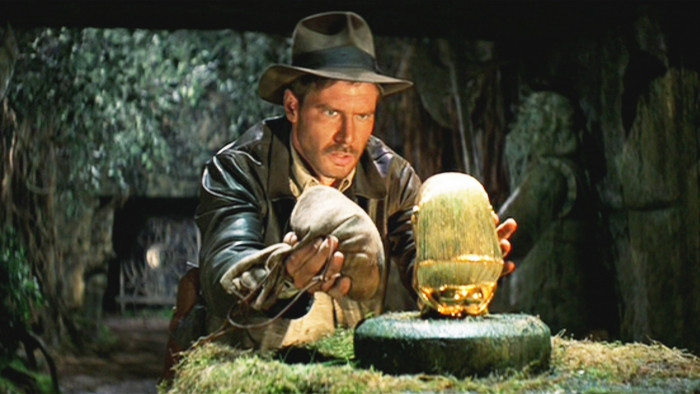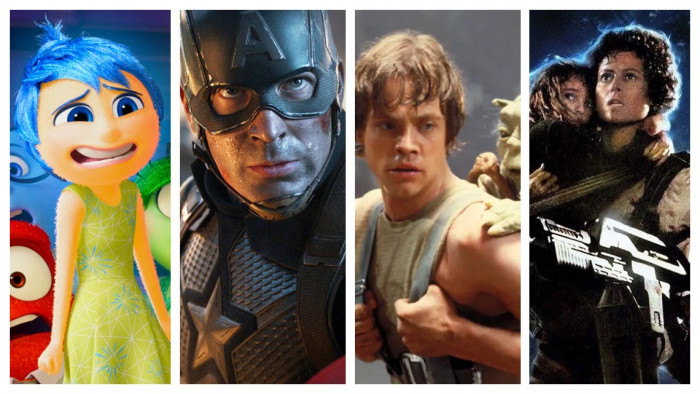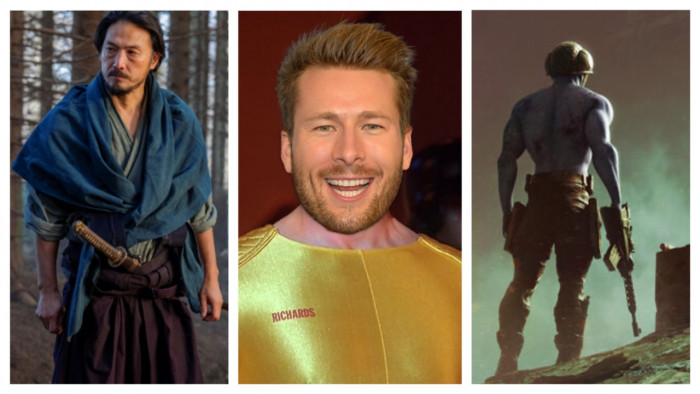The Raid was the biggest cult action hit in years. With the sequel now here under a weight of anticipation, ShortList meets its star and owner of the fastest fists in the East, Iko Uwais
A group of respectable-looking men simultaneously draw breath, pause for a second, and then emit a choral “Ooooh”. Eyes flick left and right seeking approval, before chuckles emerge and, finally, there’s a nervous ripple of applause. We have just seen a man have his throat ripped out.
Not for real, of course – this isn’t a Roman re-enactment society gone postal. It was in a film. But it was still the depiction of a man having his throat ripped out and, in modern British society, that’s really not something grown adults should applaud.
Except, tonight, in a small screening room, we’re not adults. Tonight, we are boys sat on our parents’ living room floor, high on Vimto and the sound of a VCR whirring, watching the most exciting action film we’ve ever seen. We’re laughing like we did when Chuck Norris punched someone’s leg off or Dolph Lundgren shot a goat with a bazooka. It’s a slightly guilty laughter, a bonding laughter.
You can almost smell crushed Wotsits in the carpet.
The cause of our regression is, ironically, something of an evolution. We’re watching The Raid 2, sequel to the Indonesian cult hit which, in 2012, filled the gaping action movie hole between sensitive spies, comic-book heroes, car thieves and old-school heroes still maiming legs and goats. The Raid was as fast and brutal as anything we’ve seen, but devoid of knockabout humour and one-liners. It was more grown-up, yet still made us want to leg it to the woods with plastic machine guns. And the good news is, its successor is better, bigger, deeper and, cue inappropriate laughter, even more violent.
MARTIAL STAR
The Raid also made a star of 31-year-old Iko Uwais, who reprises his role as Rama, the noble copper with hands like a nuclear food blender, who this time infiltrates the Jarkartan underworld. A few days after the screening, I’m sat with Uwais. We’re joined by the film’s Welsh director (who’ll today be acting as occasional translator), Gareth Evans, on a sunny London canal-side. For a man who could probably kill you with a nose hair, Uwais looks perfectly harmless. And this is his and Rama’s appeal. He’s not indestructible like Bruce Lee or Steven Seagal. He can and does lose fights. He doesn’t somersault over tanks. He’s human. Ish.
“I don’t want Rama to be like Superman,” says Uwais. “When a superhero gets punched, they don’t act like they feel it. But when I get punched, I make it feel like there’s real pain, that it takes him a while to re-adjust. It makes fight scenes more real. We put things in them which are not just about aggression and complexity, but also emotion. It’s not just fighting for the sake of fighting.”
“The vulnerability is important,” adds Evans. “A lot of martial arts films make the hero too invincible. He’s always close to getting beaten, and he does get beaten and knocked out. It’s more relatable. It harks back to Jackie Chan. He takes a beating and it makes you want him to win more. That’s why we don’t do humour – Jackie Chan is perfect at that. We want to do something new.”
Suddenly, Uwais lets out a yelp and leaps, like the maid in Tom And Jerry, onto his seat. The reason: two dogs so small and weak they’d have Darwin questioning himself.
“Oh, yeah,” says Evans. “Iko’s terrified of dogs.”
REAL DEAL
If he ever did play Superman, we now know what his Kryptonite would be. Not that he can’t back up Rama’s heroics in real life. Evans spotted Uwais while filming a documentary about silat, the Indonesian martial art so gloriously employed in both films. Uwais’ grandfather was a silat grand master, while his uncle ran a school. It was when Iko, aged 10, saw these men in their spectacular uniforms he decided to take it up, his uncle becoming his teacher. With a childhood love of Jackie Chan, his career almost feels like destiny. Evans says he’s a natural.
“During research, we filmed a class at his uncle’s school and this skinny kid turns up,” says Evans. “He was totally unimposing, but then when he changed into his uniform, he transformed. Whoever was holding the camera focused on him. I thought, this guy’s got charisma, is it something we could capitalise on? We ended up making Merantau [Evans’ and Uwais’ first feature film]. We gave him an acting class to help him, but I can only direct so much. What he delivers on camera, the little expressions – a subtle flick of his eye or a little tiny breath – that comes from him.”
“When he first told me about the film, I said I didn’t trust him,“ adds Uwais, laughing. “Some white boy with a false promise. The biggest challenge for me was the drama. I found it weird delivering dialogue to an actor while just behind them I could see a camera and a bunch of other people, all watching and listening.”
FIGHT NIGHT
Uwais also played football professionally in the Indonesian second division, but his grandfather persuaded him that silat would be his ticket to the world. And so it proved, as he toured with exhibitions and competitions. Both are now banned by Evans, who, according to Uwais, said he’d “f*cking kill him” if he fought again, but he can’t stop all off-screen scuffles. When I ask if he’s ever used silat in real life, Uwais reluctantly offers up a dramatic tale of which even Evans was unaware.
“Some taxis in Indonesia are a bit dodgy,” he says. “One time, about 4.30am, I got in one to go home. After a while the driver said I had to pay extra up front. I said no, stop the car, I’m getting out. All of a sudden, the seat next to me flapped down and a guy came out from the boot and held a knife to my neck, demanding my wallet and phone. We got to a quiet area and the car stopped. I’d played this situation in my head so many times, how I’d get out of it, but reflex just kicked in. I pushed the knife away with my left hand, then with my right arm ‘bam, bam, bam’ – I elbowed him in the face. Then I dragged him across me and slammed the car door on his head, ‘dum, dum, dum’. I got out of the car and screamed, ‘I’ll take you both on!’ but they drove off. Then the fear crept in and my knees went like jelly. I realised that could’ve been worse than it was.”
Indeed. They could’ve had a Chihuahua.
GOING LARGE
The Raid drew a lot of eyes towards Uwais, including those of Indonesian pop star Audy Item, now his wife and mother of his six-month-old daughter. Uwais says that, with her help, he’s learning to deal with celebrity life.
“It’s difficult to have a truly private life,” he says. “It’s just little things that don’t really bother me, like if I have dinner or go out people want a photograph. But I make sure my home life hasn’t changed. I see Audy as senior in this because she’s been in the industry for years. She didn’t know my first film, but her band dragged her to see The Raid. They were joking on Twitter about which character they’d be. That’s sort of how we met. I told her the second time I met her that I wanted to marry her. She said, ‘OK!’”
Evans modestly admits that the film also drew eyes towards Indonesian cinema, which he says is in fine form, leading to more titles being picked up.
It also means that, while The Raid was a word-of-mouth hit, its sequel has been flashing on the radar for months. The anticipation levels are off the scale, but Evans has delivered – and then some.
Rather than rest on his laurels, he’s sold them and got himself some much bigger, mainstream laurels. Moving on from the tight, single-location intensity of the first film, The Raid 2 introduces sub-plots, car chases, more major characters (mostly assassins and gangsters, granted) and spans the whole of Jakarta.
If there was debate over whether The Raid was an action or martial arts film, there’s no doubting which camp we’re in now.
PUNCH DRUNK LOVE
Don’t worry, though, fight fans; there’s still plenty of hand-to-hand combat. Indeed, the extreme tonsillectomy we’d applauded was the climax to a fight scene that can make serious claims to being the best there’s ever been – Lee, Chan and all. If you’ve seen the climactic three-way scrap in The Raid, you can only salivate over that.
“This scene took 10 days to film,” says Uwais. “We shot five days consecutively, had one day off, then did another five. It was full-on for 12 or 13 hours a day. There’s no time for your body to recover. I knew it was going to hurt.”
So why this thrill from seeing man’s cruelty unto man (and cars, buildings and goats)? There’s clearly an adrenaline rush, but whether we laugh seems to depend on the type of violence. Watching The Raid 2, scenes of execution didn’t elicit the same elated reaction as the more extreme destruction. Evans thoughts echo my experience among the men-children.
“We call those moments punchlines,” says Evans. “They’re designed to create that moment in the audience where you gasp, then realise a bunch of other people are doing it, too, and it creates this communal atmosphere and you laugh. It’s not laughing at violence, it’s more laughing at the audacity of it. Those punchlines give it levity.”
I image little Iko watching those Jackie Chan films with his friends, consuming the Indonesian version of Vimto and Wotsits. A trans-global link via roundhouse kicks.
“No,” he says. “I used to watch them on my own. Though I did go to the cinema with my brother. I remember the first film we saw together, when I was 12 or 13.”
Crime Story? Rumble In The Bronx? Something with ninja zombies on motorbikes?
“It was Toy Story.”
The Raid 2 is in cinemas from 11 April
(Images: Steve Neaves/Justin Metz/Ent One)
Latest
Related Reviews and Shortlists


The 10 best war movies of the 21st century









